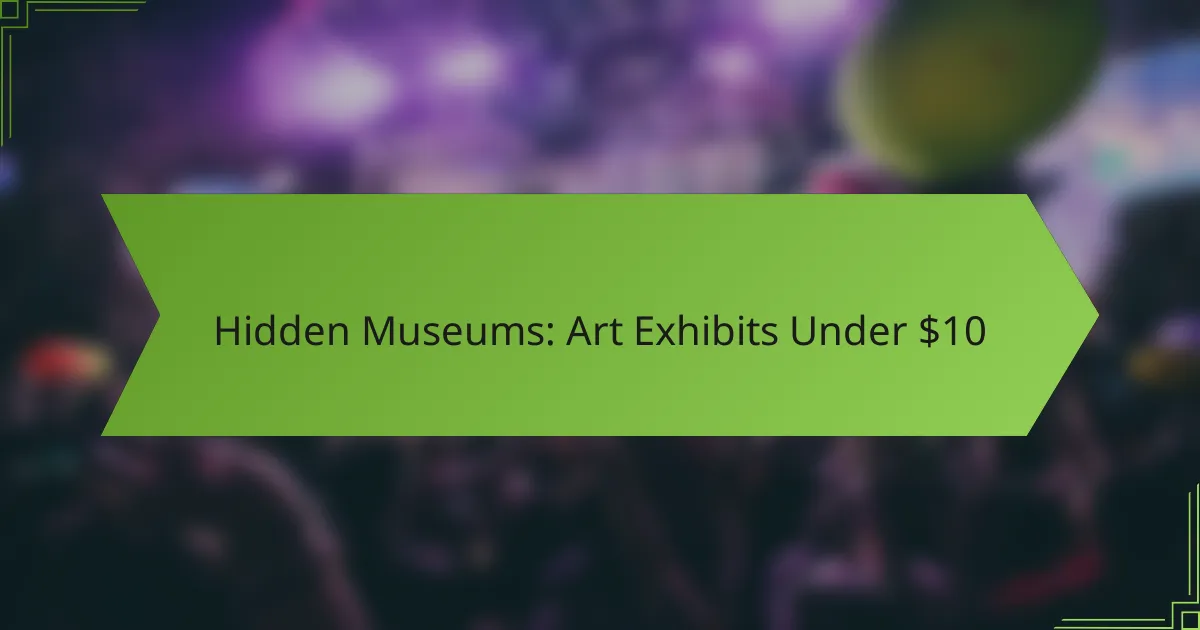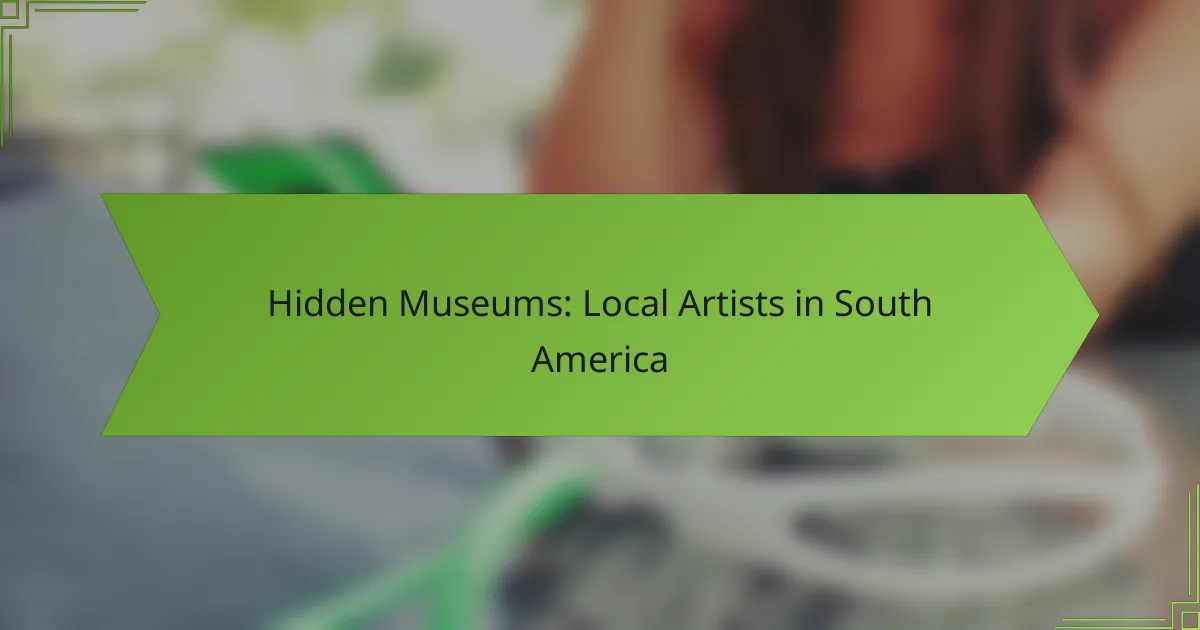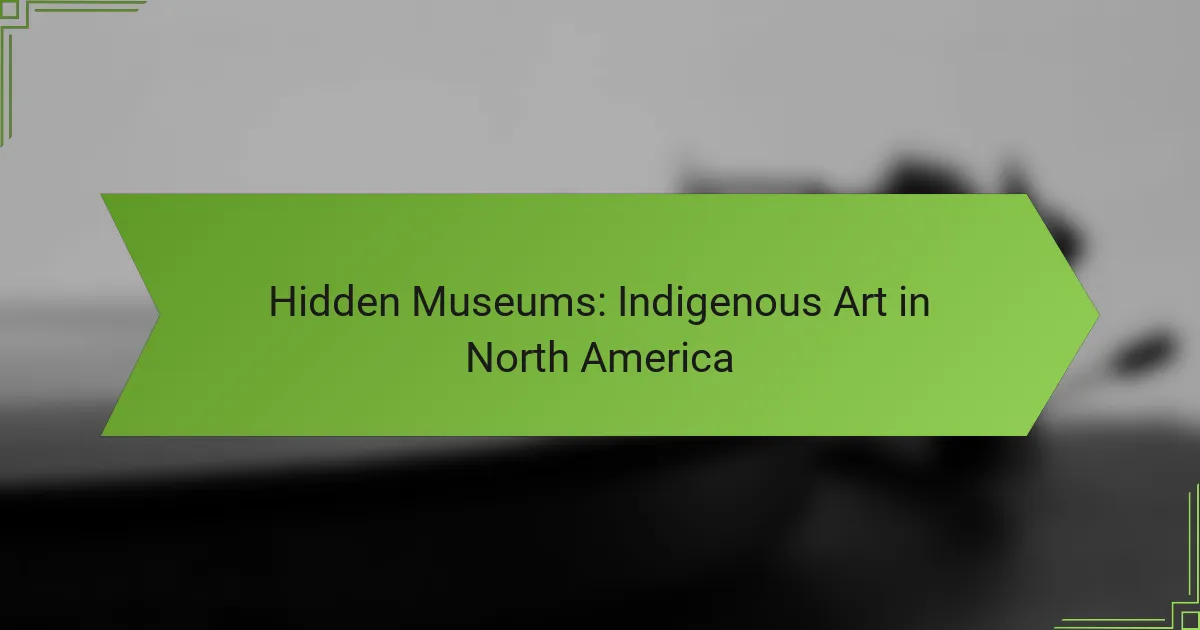Hidden museums provide a treasure trove of unique art exhibits, often for under $10, making art more accessible to everyone. These lesser-known venues focus on niche themes and local culture, offering an intimate viewing experience that enriches your appreciation of art. Planning your visit is simple and cost-effective, ensuring you can explore captivating collections without breaking the bank.
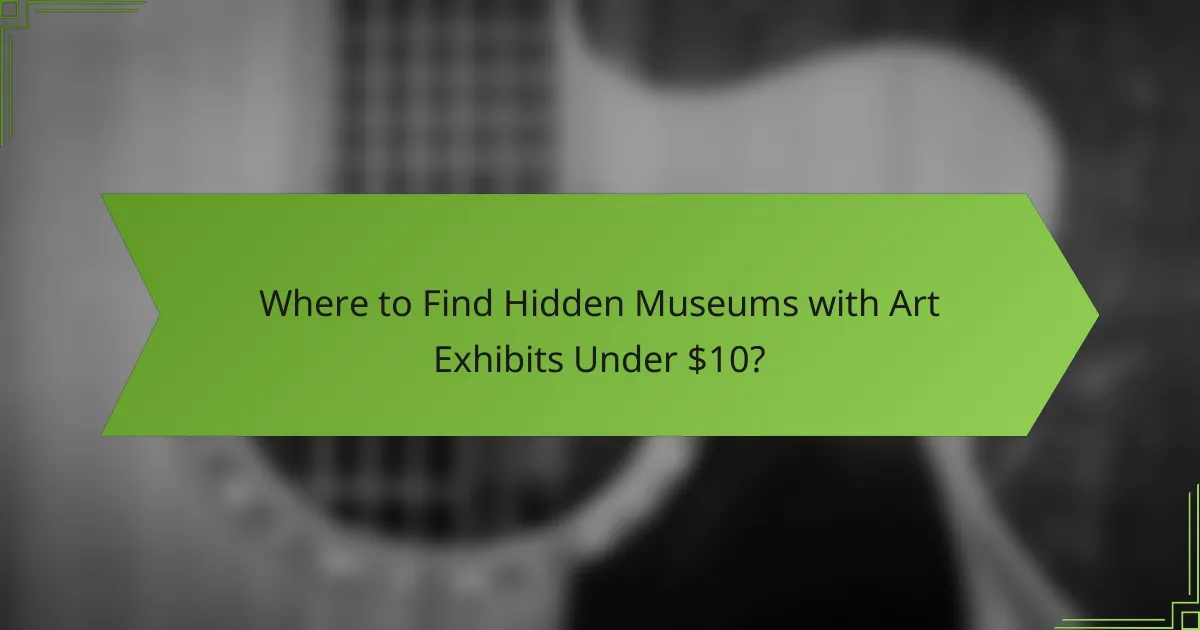
Where to Find Hidden Museums with Art Exhibits Under $10?
Hidden museums often offer unique art exhibits for under $10, making them accessible to a wider audience. These venues typically focus on niche themes or local culture, providing an enriching experience without a hefty price tag.
The Museum of Illusions
The Museum of Illusions features interactive exhibits that challenge perception and engage visitors of all ages. Admission is generally around $15, but many locations offer discounted tickets on certain days, bringing the price down to under $10.
Visitors can explore various optical illusions and immersive installations, making it a fun outing for families and friends. Check local listings for special promotions or group rates to save even more.
The Tenement Museum
The Tenement Museum in New York City showcases the immigrant experience through restored apartments and guided tours. While standard tickets are priced higher, they often provide pay-what-you-wish options on certain days, allowing entry for under $10.
Booking in advance is recommended, especially for popular tours. This museum offers a unique glimpse into the lives of past residents, making it a valuable educational experience.
The Frick Collection
The Frick Collection, located in Manhattan, is known for its impressive art collection housed in a historic mansion. Admission is free on certain days, making it an excellent opportunity to enjoy world-class art without spending a dime.
Check their website for specific free admission days and plan your visit accordingly. The serene atmosphere and beautiful gardens enhance the experience, making it a must-see for art lovers.
The Rubin Museum of Art
The Rubin Museum of Art focuses on Himalayan and Indian art, offering a unique perspective on culture and spirituality. Admission is free on Fridays, allowing visitors to explore its diverse collections without a fee.
Consider attending special events or exhibitions that may have a nominal charge, but overall, the museum provides a rich cultural experience at little to no cost.
The American Folk Art Museum
The American Folk Art Museum celebrates traditional and contemporary folk art, with many exhibitions available for free. While some special exhibits may charge a fee, general admission is often under $10, making it accessible for all.
Keep an eye out for workshops and community events that may also be offered at low or no cost, enhancing your visit while supporting local artists.

What Are the Benefits of Visiting Hidden Museums?
Visiting hidden museums offers a range of benefits, including affordability, unique art collections, and a more intimate viewing experience. These lesser-known venues often charge low admission fees, making art accessible to a wider audience.
Affordable cultural experiences
Hidden museums typically have admission fees under $10, making them a budget-friendly option for art lovers. This affordability allows visitors to explore cultural exhibits without the financial burden often associated with larger institutions.
Many of these museums also offer free days or discounted rates for students and seniors, further enhancing their accessibility. By taking advantage of these opportunities, you can enjoy enriching cultural experiences at minimal cost.
Unique art collections
Hidden museums often feature unique art collections that are not found in mainstream galleries. These venues may showcase local artists, niche themes, or historical artifacts that provide a different perspective on art and culture.
Exploring these collections can lead to unexpected discoveries and a deeper appreciation for diverse artistic expressions. Look for exhibitions that highlight regional talent or specific cultural movements to enhance your visit.
Less crowded environments
One of the significant advantages of hidden museums is the less crowded environment, allowing for a more personal experience with the art. Unlike popular museums, these venues often have fewer visitors, enabling you to engage with the exhibits at your own pace.
This tranquility can enhance your understanding and enjoyment of the art, as you can take your time to reflect without the pressure of large crowds. Consider visiting during off-peak hours or weekdays for an even quieter experience.
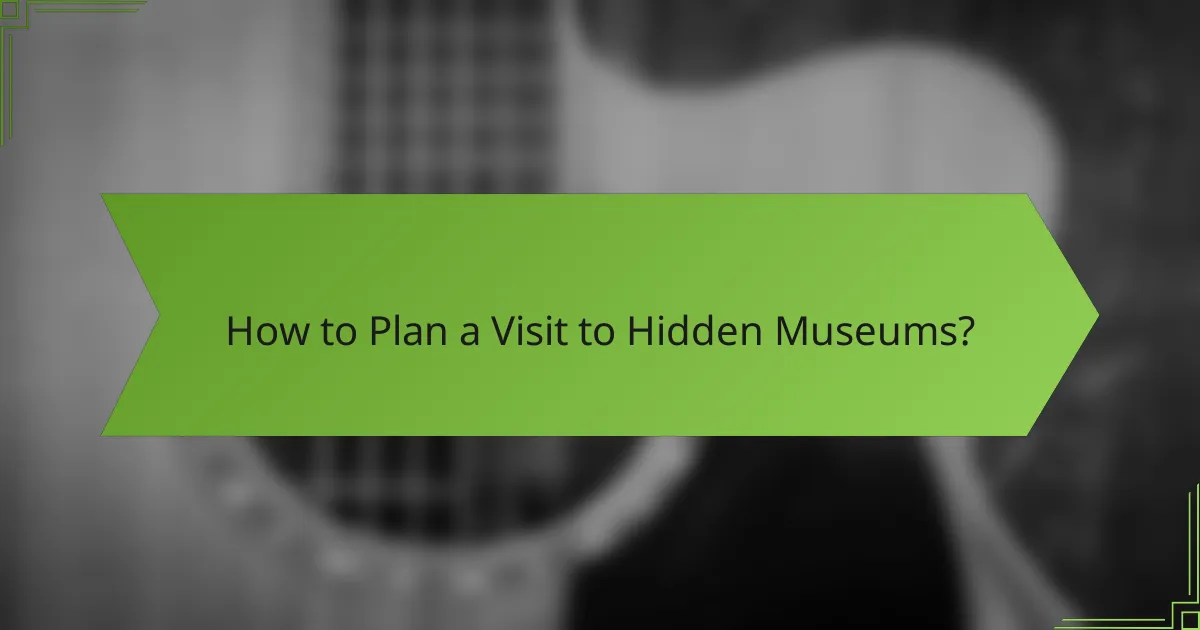
How to Plan a Visit to Hidden Museums?
Planning a visit to hidden museums involves checking essential details like hours of operation, admission fees, and current exhibits. This ensures you maximize your experience while keeping costs low, often under $10.
Check museum hours and admission fees
Before visiting a hidden museum, verify its hours of operation to avoid disappointment. Many smaller or lesser-known museums have limited hours, often only open on weekends or specific days during the week.
Admission fees can vary significantly, but many hidden museums offer entry for under $10. Some may even have free admission days or suggested donations, making it affordable for everyone.
Book tickets in advance
If the museum allows for advance ticket purchases, take advantage of this option. Booking ahead can save time and ensure you secure a spot, especially for popular exhibits that may have limited capacity.
Some museums may offer discounts for online bookings, so check their website for any promotional deals. This can help you stay within budget while planning your visit.
Research current exhibits
Before your visit, look into the current exhibits featured at the museum. Many hidden museums rotate their displays frequently, so knowing what’s on view can enhance your experience.
Check the museum’s website or social media pages for information on special events, artist talks, or workshops that may coincide with your visit. Engaging with these activities can provide deeper insights into the art and artists showcased.
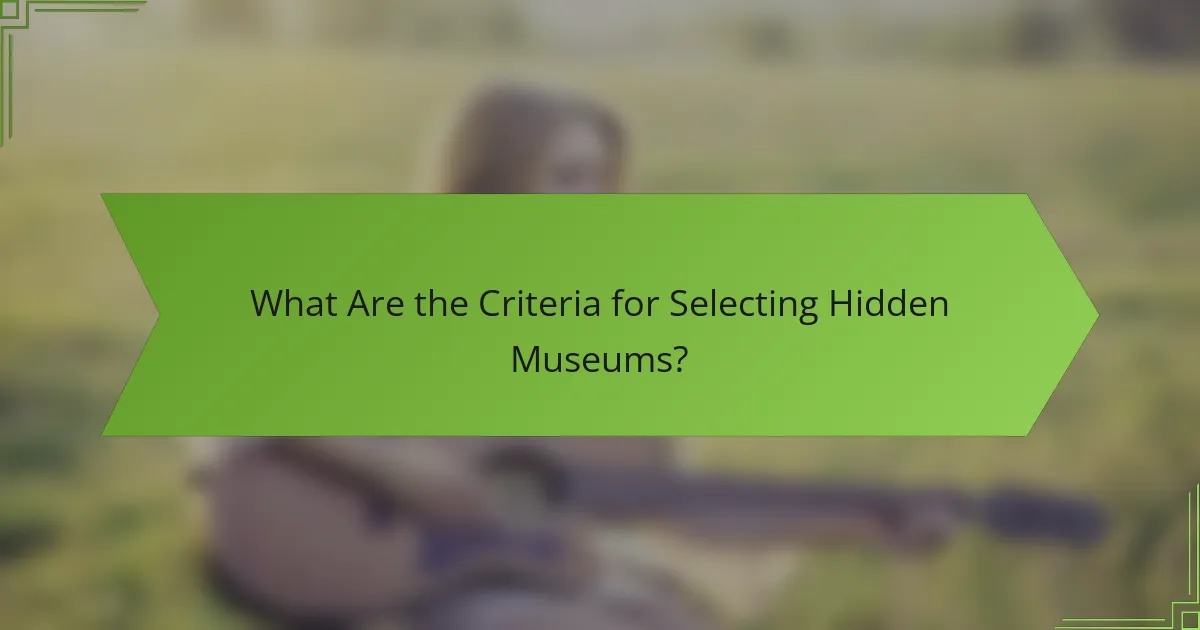
What Are the Criteria for Selecting Hidden Museums?
Hidden museums are often chosen based on their accessibility, the variety of exhibits they offer, and the feedback from visitors. These criteria help ensure that the experience is enjoyable, affordable, and worthwhile for art enthusiasts and casual visitors alike.
Location accessibility
Location accessibility refers to how easily visitors can reach the museum. Ideally, hidden museums should be situated near public transportation options, such as bus or subway stations, or within walking distance from popular landmarks. Checking the museum’s website for directions and parking information can save time and enhance the visit.
Additionally, consider the operating hours and any potential entry restrictions. Some museums may have specific days or times when they are less crowded, making for a more pleasant experience.
Exhibit diversity
Exhibit diversity is crucial for engaging a wide range of interests. A hidden museum should feature a mix of permanent and rotating exhibits, showcasing different art styles, periods, and mediums. This variety keeps the experience fresh and encourages repeat visits.
Look for museums that highlight local artists or unique themes, as these can provide insights into the cultural landscape of the area. Checking the museum’s online calendar for upcoming exhibits can also help plan your visit around special events.
Visitor reviews and ratings
Visitor reviews and ratings offer valuable insights into the quality of a hidden museum. Platforms like Google Reviews or TripAdvisor can provide firsthand accounts of other visitors’ experiences, highlighting both strengths and weaknesses. Pay attention to comments on staff friendliness, cleanliness, and overall atmosphere.
When assessing ratings, consider the number of reviews as well; a museum with a few high ratings may not be as reliable as one with a larger number of mixed reviews. This can help gauge whether the museum is worth a visit, especially when looking for affordable options under $10.
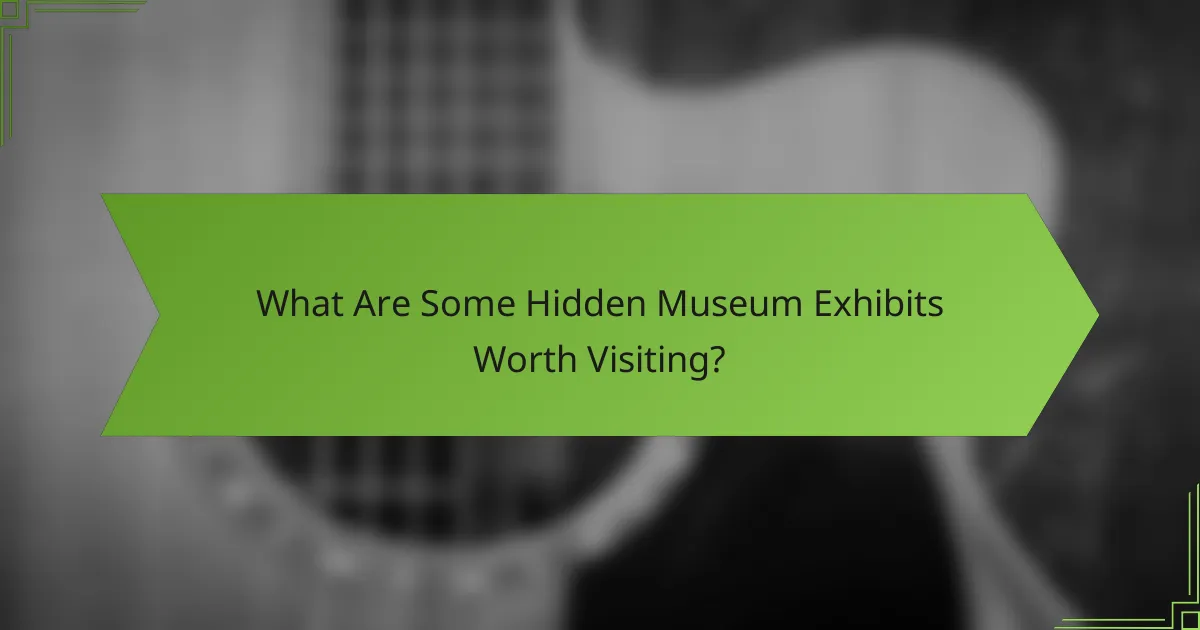
What Are Some Hidden Museum Exhibits Worth Visiting?
Hidden museum exhibits can offer unique artistic experiences at a low cost, often under $10. These lesser-known gems provide opportunities to explore diverse art forms without breaking the bank.
Local Art Galleries
Local art galleries frequently host rotating exhibits featuring emerging artists. Admission is often free or costs a nominal fee, making them accessible to everyone. Check community boards or local websites for current exhibitions.
Many galleries also offer special events, such as artist talks or workshops, which can enhance your visit. Engaging with the artists and their work can provide deeper insights into the creative process.
University Museums
University museums often showcase impressive collections and temporary exhibits at little to no cost. These institutions frequently highlight student work alongside established artists, providing a fresh perspective on contemporary art.
Look for special student days or free admission events, which can make your visit even more affordable. These museums may also offer guided tours that enrich the experience without significant expense.
Pop-Up Exhibitions
Pop-up exhibitions are temporary art shows that can appear in unexpected locations, such as warehouses or vacant storefronts. These exhibits usually charge low entry fees and often feature local artists or specific themes.
Keep an eye on social media or local event listings for announcements about upcoming pop-ups. Visiting these exhibitions can be a fun way to discover new talent and enjoy art in a unique setting.
Community Centers
Community centers often host art exhibits that showcase local talent and cultural heritage. Admission is typically free or very inexpensive, making these venues great for budget-conscious art lovers.
Participating in community events or workshops can also provide opportunities to interact with artists and learn more about their work. These centers often reflect the local culture, offering a rich and diverse artistic experience.
